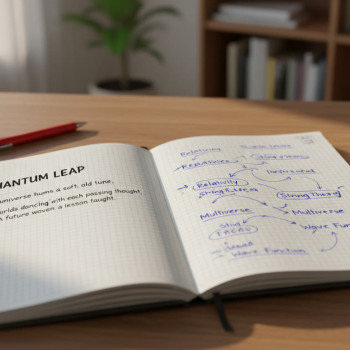Why Showing Your Work Matters: From CBSE Proofs to AP Physics C Answers
If you grew up solving physics and maths problems under the CBSE system, you’re likely comfortable with step-by-step derivations, clean algebra, and statements like “thus proved.” AP Physics C—mechanics and electricity & magnetism—rewards that careful approach, but with its own rhythm. This guide helps you translate CBSE-style derivations into AP-friendly solutions that earn full credit on free-response questions (FRQs). Think of it as learning to speak the exam’s language: precise, compact, and demonstrably logical.

Understand What Examiners Want: Reason, Not Magic
AP readers are trained to look for evidence of understanding. They don’t assume you “just know” the final step. Points are awarded for the chain of reasoning: identifying principles, setting up equations, showing algebra or calculus work, and stating final answers with appropriate units and labels. If a problem asks for the acceleration at a certain instant, simply writing a numeric value might get you part credit if you’ve shown how you got there—derivations matter.
High-level checklist readers use
- Correct identification of the physics principle(s) involved (e.g., Newton’s second law, conservation of energy, Gauss’s law).
- Clear setup of relevant equations and boundary/initial conditions.
- Correct algebraic or calculus manipulation.
- Final numeric or symbolic answer with units, labels, and any necessary justification.
- Reasonable approximations or limiting-case analysis when asked.
Translate CBSE Derivation Habits into AP-Style Responses
CBSE derivations often emphasize rigorous step-by-step transformations and descriptive prose. That’s great—the disciplined structure will be your advantage. But AP graders prefer compactness and clarity without unnecessary wording. Here’s how to convert habits into AP-friendly techniques.
1. Start by stating the principle (briefly)
CBSE: You might begin by writing a paragraph about the law. AP: One crisp line is enough—name the law and write the equation. For example:
- AP-style: “Apply Newton’s Second Law: ΣF = ma.”
- Then immediately write the forces and the algebraic equation you will manipulate.
2. Set variables and orientation clearly
Before wading into derivatives and integrals, define your variables and coordinate system. A small note like “take +x to the right” or “let v(t) be velocity upward” prevents ambiguity and saves lost points when the answer depends on sign conventions.
3. Show the algebra/calculus that ties principle to result
Where CBSE might show every intermediate simplification, AP requires enough steps so the reader sees your logic. For calculus-heavy problems, show the integral or derivative step and a critical intermediate expression. You don’t need to expand trivial algebraic manipulations, but don’t skip the core transformations either.
Concrete Strategy: A Step-by-Step Template for FRQs
Use this template when approaching any AP Physics C free-response problem. It structures your answer, helps prevent careless omissions, and aligns with the rubric readers use.
FRQ Answer Template
- 1) Quick statement of the governing principle(s).
- 2) Define variables, coordinate system, and signs.
- 3) Draw a neat free-body diagram or circuit diagram if relevant.
- 4) Write the equation(s) that result from the principle(s).
- 5) Show algebraic or calculus steps leading to the expression for the requested quantity.
- 6) Plug in numbers (with units) or present the symbolic final answer, and clearly box it.
- 7) If applicable, state limiting cases or check units for a quick reasonableness check.
Example Walkthrough: Mechanics Problem (AP-Style)
Below is a model solution flow for a classic problem: a block sliding down a frictionless incline with angle θ, attached to a spring at the bottom. The question asks for the maximum compression of the spring.
Step-by-step demonstration
- State principle: Conservation of mechanical energy (if no nonconservative forces act): E_initial = E_final.
- Define variables: Let block mass = m, spring constant = k, initial height = h, compression = x. Take gravitational potential zero at spring equilibrium.
- Equation setup: mgh = (1/2)kx^2 (all initial kinetic energy is zero, final gravitational potential decreased, spring stores energy).
- Solve: x = sqrt(2mgh/k).
- Box the final symbolic expression and, if numbers are given, plug them in with units.
Even though the algebra is simple, each of these lines maps to rubric points: principle, variable definition, correct equation, correct algebra, and final answer with units.
What to Do When You’re Asked to ‘Show Your Work’ for Partial Credit
Sometimes you might make an arithmetic mistake but correct physics setup. AP graders often award significant partial credit for correct setup even if final arithmetic is off. That’s why aligning your work with the rubric—clear principles and clean equation setup—is a high-leverage strategy.
How to maximize partial credit
- Never erase intermediate steps: cross them out if you must, but keep them visible.
- If you change variable definitions mid-solution, restate them briefly.
- Box your final answer and show units—most graders will look here first.
- If you make an algebra mistake, annotate a quick check: “Dimension check fails” or “Recompute numbers”—this shows awareness and can prevent a blank solution.
Common Mistakes CBSE Students Make on AP FRQs (and How to Fix Them)
CBSE students often bring excellent derivation instincts, but small differences in exam culture can cost points. Here are common traps and quick remedies.
Mistake 1: Too verbose or circular reasoning
Fix: Keep explanations concise. Replace paragraphs with equations and a short sentence naming the principle. Examiners love compact logical chains.
Mistake 2: Skipping variable definitions
Fix: Always, always define variables and choose a coordinate system. This costs one sentence and saves confusion.
Mistake 3: Failing to label final answers with units
Fix: Make it a habit: box answers and include units. Even if units are incorrect, graders can locate your answer and award partial credit.
Mistake 4: Writing derivations as prose without equations
Fix: Use a balance of short prose and equations. Let the mathematics carry the argument; the prose should introduce the step.
Presentation Tips: Make Your Pages Reader-Friendly
Examiners read hundreds of solutions—clear layout improves readability and reduces the chance of missing a key step. Adopt these habits during practice so they become second nature on test day.
Layout best practices
- Start each new part of the question on a fresh line or small new paragraph.
- Use arrows to show substitutions (e.g., “Substitute v = dx/dt → …”).
- Box or underline the final answer for each question part.
- Sketch tiny diagrams next to the associated equations, not off on their own page.
- If a multi-part question uses previous results, explicitly reference them: “Using result from (b), v = …”.
Table: Typical Rubric Items and How to Capture Them in Your Work
| Rubric Item | What the Reader Looks For | How to Show It |
|---|---|---|
| Principle Identification | Correct law/theorem named | One-line statement: “Use conservation of energy” or “Apply ΣF = ma.” |
| Correct Setup | Appropriate equations and boundary/initial conditions | Write equations and define variables/coordinate system. |
| Mathematical Work | Proper manipulation (algebra/calculus) | Show integrals/derivatives and key algebra steps; don’t skip the core transforms. |
| Final Answer | Correct value/expression with units | Box answer and include units; if symbolic, indicate variables used. |
| Reasonableness | Dimensional checks or limiting cases | Quick unit check or “as m→0, x→0” style comment when appropriate. |
Calculus in AP Physics C: Show Your Differentiation and Integration
AP Physics C expects you to use calculus where required. Showing the key differentiation or integral step is critical. Don’t just write the antiderivative without indicating the integration limits or the differentiation rule you used.
Example: Showing an Integral Properly
Suppose a force F(x) = kx acts; to find work from x=a to x=b, write:
- W = ∫_a^b F(x) dx = ∫_a^b kx dx = (1/2)k(b^2 − a^2).
This shows the integral, the antiderivative, and the evaluation at limits—each can correspond to rubric points.
How to Practice Showing Work: Drills and Habits
Good habits form under repeated, focused practice. Don’t just solve for answers—practice the “showing” separately until the format becomes instinctive.
Practice drills
- Rewrite a solved CBSE derivation into an AP-style two-column format (left: principle/statement; right: equations/steps).
- Time yourself solving FRQs and force yourself to box answers and include units in the final minute.
- Swap solutions with a classmate and grade each other’s work against the rubric—this teaches what graders look for.
- Record short audio explanations of each problem step—narrating your reasoning helps internalize concise statements.
Where Personalized Tutoring Helps: Why Sparkl’s Approach Fits
Making the switch from CBSE derivations to AP precision is partly technique and partly mindset. Personalized tutoring can speed this transition. Tutors who focus on 1-on-1 guidance, tailored study plans, and targeted feedback help students practice the exact presentation skills graders reward. Sparkl’s personalized tutoring offers structured sessions where tutors review student-written solutions, provide model AP-style rewrites, and use AI-driven insights to highlight recurring errors—so your practice time becomes smarter, not just longer.
Sample Grading Simulation: Annotated Answer
Below is a compact simulated grader annotation for a friction problem where a student finds acceleration but misses a sign. This demonstrates how showing work wins partial credit.
Student solution (compact)
- ΣF = ma → mg sinθ − μmg cosθ = ma
- a = g(sinθ − μ cosθ) (boxed)
Grader notes
- Principle identified (full credit).
- Setup correct (free-body forces included) (full credit).
- Algebra correct (full credit).
- If sign or arithmetic mistakes occur later, grading often still awards setup and algebra points—this answer would likely receive full credit.
Two Final Quick Tricks for Exam Day
On test day, time is your biggest ally if used wisely. These small hacks save time and improve scoring.
Trick 1: Do a mini-outline for each part
Before writing detailed work, jot a two-line outline: principle, main equation. This prevents wasted work and makes it easier to get partial credit if you run out of time.
Trick 2: Prioritize high-point parts
Skim the FRQ early and attack parts with the highest point value where confident—showing clear work on those sections gives the most scoring return.
Closing Notes: Confidence, Clarity, and the Power of Practice
Moving from CBSE derivations to AP Physics C style is less about changing what you know and more about learning how to present it. Clear statements of principles, neat variable definitions, visible calculus steps, and boxed final answers transform a correct thought into earned points. Keep practicing under timed conditions, revise your work to be concise and consistent, and consider targeted help if you want to accelerate progress—Sparkl’s personalized tutoring can help you refine presentation, receive tailored study plans, and get the one-on-one feedback that turns small mistakes into habits corrected before exam day.

Remember: graders reward clarity and logic. Your neat derivations will shine when they follow the exam’s expectations. Practice the template, prioritize clear equations, and keep refining your presentation—earn those points one deliberate step at a time.
Good luck—bring your best reasoning and your clearest handwriting.























No Comments
Leave a comment Cancel